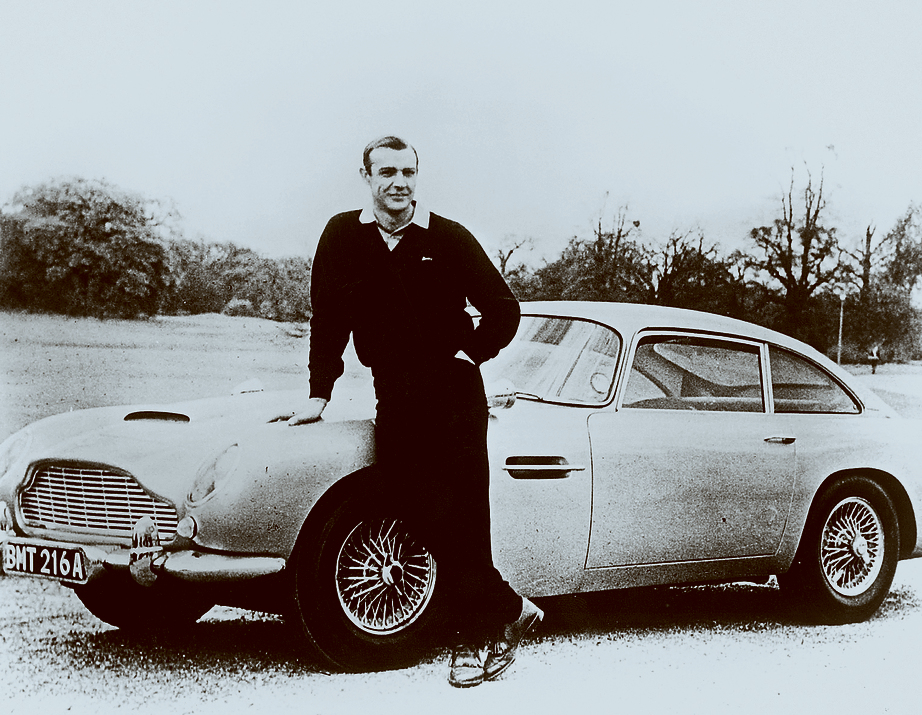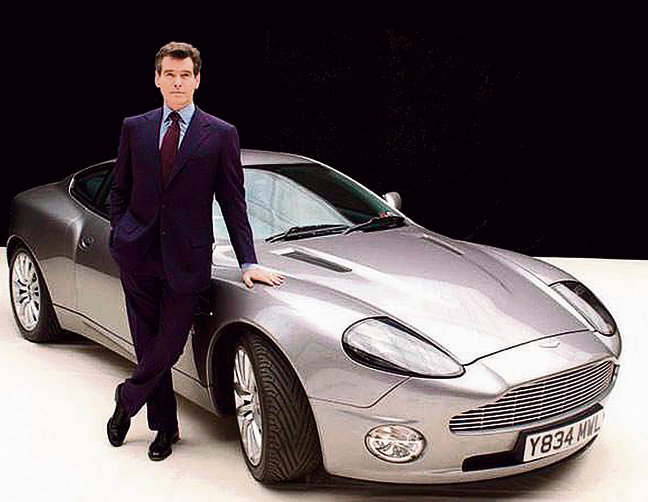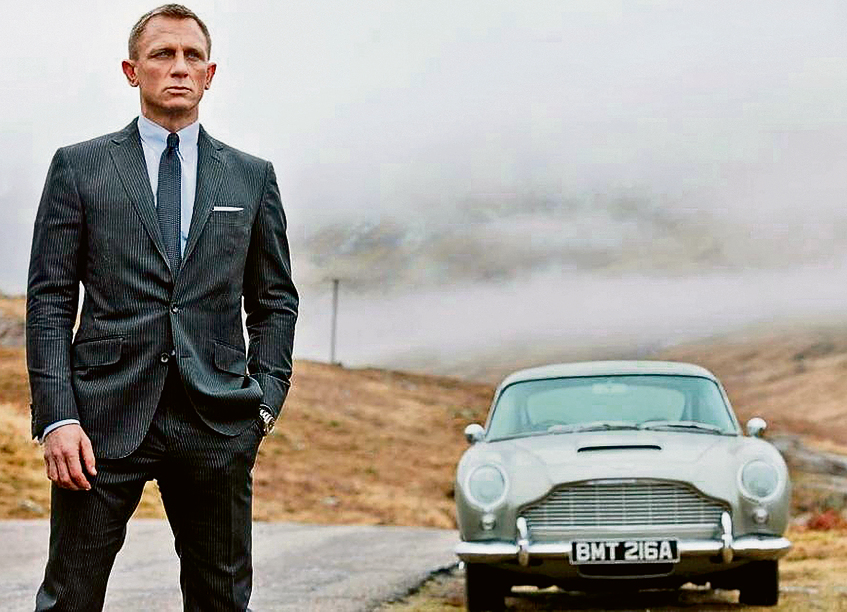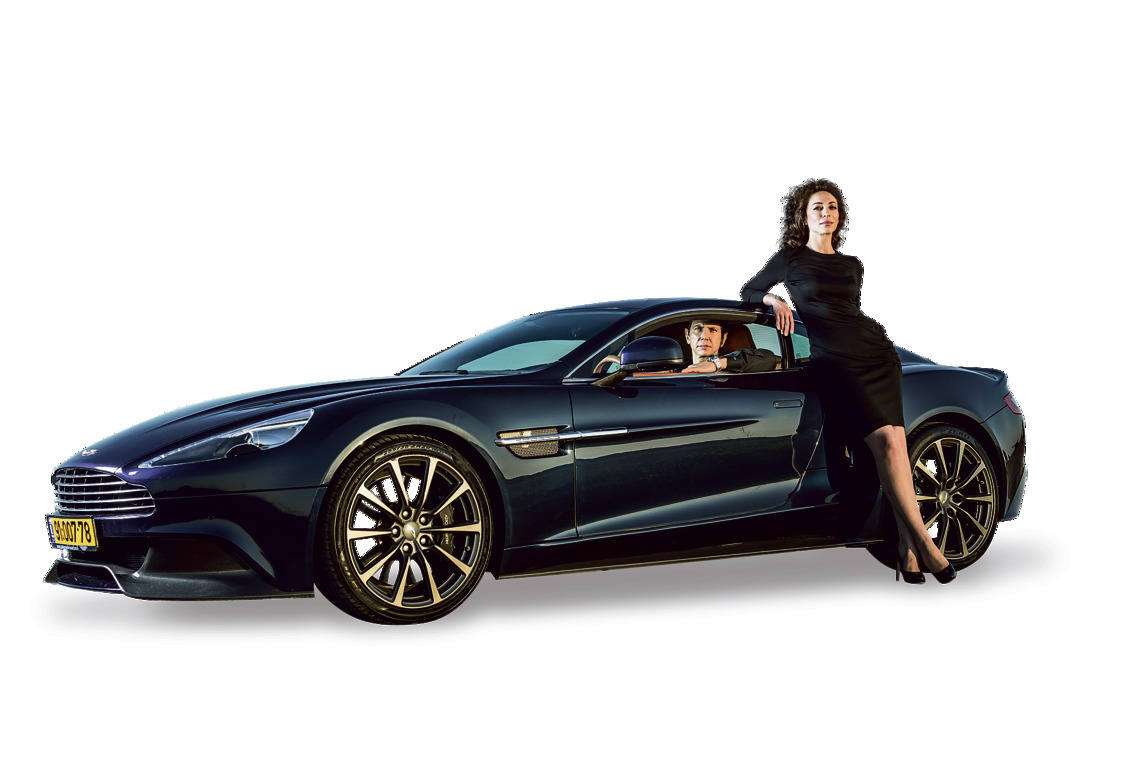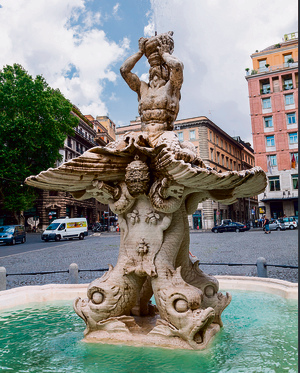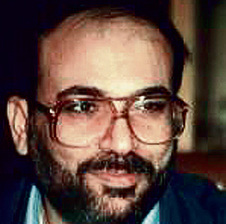
Spy chases: Between 007’s Aston Martin and Mossad’s Volkswagen Camper
Yana Sofovich and Ronen Bergman take James Bond’s flagship car for a wild ride on Israel’s roads, leaving the stunned drivers behind them in the dust. On the way, they look back at the slightly less heroic cars that have starred in the real world of Israeli intelligence. Here’s what they can reveal, for your eyes only.
Ronen: It all began when Udi Etsion, Yedioth Ahronoth’s motoring editor, heard that the Aston Martin Vanquish model—which has only one of its kind in Israel—was available, and gave me a call: “Come on, it’s the famous James Bond car, and you write about spies.” If I have an opportunity to drive the vehicle most identified with the world’s second oldest profession, I thought, why not ask the woman who reminds me of a James Bond girl more than any other woman (and rumor has it that a few intelligence agencies actually sought her services) to join the ride? Fortunately, Yana Sofovich agreed.

Yana: To tell you the truth, I have always wondered why the 007 series’ producers have not yet realized that there is no need to keep looking for the next James Bond girl, because she is here, right under their noses, living her life in Tel Aviv?! I’m certain that I am not the only one. There is hardly a single woman in the world who hasn’t imagined herself as a manipulative, gorgeous, sexy and smart femme fatal who has every man at her feet—like a James Bond girl. I also believe there is not a single man alive who didn’t want to be James Bond, at least for a few days.
As we all know, the two most recognized symbols of Ian Fleming’s series of spy novels are the ladies whose sex appeal no one can resist, possibly apart from James Bond himself, and the car whose performance no one can resist—the famous Aston Martin.
When one types Aston Martin in Google, the robot immediately completes the famous spy’s name—James Bond—although it only became 007’s official car in the third film in the series, “Goldfinger.” Fleming, by the way, originally teamed the agent with the license to kill with the DB3 model, but the company had just begun marketing the improved DB5 and the producers demanded the prototype. At first, the company executives sneered at them, but eventually gave in to the pressure. They didn’t regret it. Not only has the Aston Martin starred in 11 other films in the most successful series in the history of film since then, but as soon as “Goldfinger” hit the screen, it recorded a sharp rise in sales. Everyone wanted to be, look and drive like Sean Connery.
In the next film, “Thunderball” (whose name served as an inspiration for the secret codename of what was known as the 1976 Israeli Entebbe raid), Bond used the same car, but this time with improvements from the workshop of Q, the genius inventor of the spy gadgets, which all seem somewhat childish today, led by a rear-facing cannon with an impressive caliber. Later on, the car received cylinders in its engine, tire spikes, an elegant ejector seat and control and surveillance systems.
The Aston Martin Vanquish, which we drove on, was first introduced in luxury car agencies and simultaneously in the 2002 film “Die Another Day,” starring Pierce Brosnan. There, with Madonna’s voice in the background, he seduces Halle Berry with the Aston Martin and gets back at the bad guys who held him hostage in a horrible North Korean prison.
Ronen: I had already spent a day in the past with a relatively old version of the DB in Cape Town. The experience of driving the Aston Martin, which makes one feel—if only for a moment—a bit like James Bond, was pretty cool back then. The Vanquish, however, provides a completely different feeling. The car we drove on (NIS 2.5 million for a new model—really is a masterpiece).
Yana: Design, like music, is a language which, at its best, can rock one’s soul and create a wonderful new world. The moment I sat down in the Aston Martin Vanquish, I sensed its power and elegance. The car’s body is a pinnacle of industrial design and accuracy. There is a thought behind every curve. Each line is very clean, without any redundant elements pointing to splendor or arrogance. The dashboard, which looks like 1960s-style designed vintage, the seats and the entire interior of the car appear to be made of one piece, and each seam looks as if it was embroidered by hand at a high fashion house. The leather covering of the interior is so gentle that it gives the feeling of a luxury handbag store. The combination of a royal blue (the color whose pigment was so expensive to produce in the Middle Ages that it has been linked since then to sacred, caesarean and rare), together with the car’s interior in suntan and sand colors, create together one of the most classic and beautiful combinations in the color theory.
The Aston Martin may be the ultimate spy/assassin’s car in films, but in real life, and definitely in Israel, it’s the last car a spy who wishes to remain alive would choose. During our drive in the Tel Aviv area, in the Sharon region and in the West Bank, there wasn’t a single person on the street who didn’t turn around.
Do the Hollywood scripts have anything to do with reality? Well, it turns out that the car and its different functions actually play a key role in many of 007’s operations, and in the real world of intelligence as well. The reasons are almost obvious, as the world of intelligence takes place in many different arenas, and moving between them requires mobility, which is usually done by car. That applies to the need of the Israeli spy (an IDF soldier in the enemy’s hinterland or a Mossad undercover “warrior”) to blend into the tumult of the city, to move from one large city to another, or to get off a helicopter as far as it can reach and rush in the middle of the night, as fast as possible, to the place where he must hide a listening device. It also applies to the enemy, who must move as well, in accordance with his evil goals.
The enemy’s use of a car holds another clear advantage for the good guys. It takes place outside military or other governmental compounds, which are usually much harder to infiltrate. Someone who is on the move in the heart of a European capital can be followed, eavesdropped on and, if necessary, shot or bombed, usually much easily than if he were sitting behind a desk in a study at his country’s embassy. On the other hand, a quick movement by the enemy, especially if he makes sure to drive an unusual way each time, creates a routine breaker and a target which is much more difficult to follow or hit on schedule.
The history of Israeli intelligence is filled with stories that include cars, although slightly less heroic and a lot more practical than the Aston Martin. In the 1960s, for example, there was a heated debate in Israel over the import of German-made vehicles. Then-Mossad chief Isser Harel ordered the secret service to rent German cars, which had a reputation of being reliable and safe, “to make them suitable for many functions and so that they won’t break down.” In one of them, a Volkswagen Camper van, the Mossad made structural changes and expanded the area under the back seats to make it possible to hide a living person in there.
This car was used by the Mossad operatives for abductions. Harel, who commanded some of the operations himself, used to turn to the kidnapped person and say: “The compartment you are being held in has a hidden tube system. If you cause any trouble when we cross the border, we’ll press the button and a portion of gas will be discharged into the compartment and kill you. If you remain quiet, you will suffer no harm. Understood?” Who wouldn’t have understood?
Yana: The Vanquish’s accelerator pedal is as powerful as 600 horses running together. It has 12 V-shaped cylinders (rather than four cylinders organized in one row, like in a regular car), which create a speed that could have sent the vehicle into a flight mode. A Sport button shifts the car into a real racecar mode, and the speed skyrockets within seconds. The back wheel is disconnected, and the stomach sticks to the back and flings the digestive system in all directions. The Vanquish is very stable on the road, however, thanks to the aerodynamic structure which channels the airflow the opposite way a plane does—instead of lifting it up, the air attaches the car to the road.
Ronen: One of the highlights of driving the Aston Martin Vanquish is its quick response to all the driver’s orders, as extreme as they may be—even orders which would cause an accident in any other vehicle. The Stability Control is defined by the car’s marketers as “the supportive mode which makes you feel like God, but protects you, makes you feel that you’re in control when the car is in fact in control.”
Leon (our guide) guides us when to downshift, when to step on the gas, how to emerge from a curve with an elegant slide and quick stabilization, “something which in any other car would end in a ‘Game Over.’”
The need to learn professional driving became imperative in the Israeli intelligence community starting from the late 1960s, when terror became the main challenge faced by Israel’s intelligence services. The Shin Bet’s security department was established at the time, and a professional driving course was added as part of the department workers’ training. Different roads in the north of Israel were occasionally blocked for training. These roads were also used in the training of Sayeret Matkal’s drivers/fighters as part of the unit’s fighter training course.
Cars were also used in part of the series of targeted killings carried out by the Mossad after the murder of the Israeli athletes in the 1972 Munich Olympic Games. On June 10, 1972, the Mossad received information that Wadie Haddad of the Popular Front for the Liberation of Palestine (PFLP) had sent two of his people to carry out an attack at the El Al Israel Airline’s offices in a European country. A team from Kidon (Mossad's assassination unit, which is part of the Caesarea special operations division), led by “Uri,” began following the two men, who were travelling in a Fiat 128 with a Western German license plate. Several days later, at night, the Kidon members planted an explosive device under the vehicle. When they began driving, the Mossad assassinators followed them from a distance. Caesarea chief Mike Harari was driving the first car, sitting next to “Uri”, who was holding a remote control the size of a shoebox, which was the most advanced technology at the time. “Uri” was about to press the button just as the car reached a square which had an important sculpture in its center.
Harari, who was also a man of culture, art and literature, immediately spotted the sculpture and cried out: “No! Stop! The statue…!” He shouted at the stunned “Uri” and explained the historical importance of the sculpture. Several seconds later, the car with the two Palestinians moved away from the square. Harari gave the order and “Uri” pressed the switch, and the front part of the car exploded. Because of the weapons found in the vehicle, the local police interpreted the event as a terrorists’ work accident.
When the film “Diamonds are Forever” (starring Sean Connery) was released in 1971, Harari took some of the Caesarea unit’s members to a Tel Aviv cinema to watch it together, and then rushed to balance the picture afterwards. At the end of the screening, he gathered them and said: “That’s all very nice, but remember that we’re not living in a film. These chases are not real. We are not supermen, and our top goal is not to be discovered, to enter and exit fast without being noticed.”
There were, however, real pursuits which would not put an action film to shame. Shortly after the Tel Aviv screening, Harari paid a visit to his operatives who were busy following a Palestinian Liberation Organization (PLO) activist in Milan. Incidentally, just as he arrived, with a woman fighter, to wait for the object near the apartment he was using, the man got into a car and began driving. Harari immediately decided to follow him, embarking on an exhausting 18-hour drive, with Harari and the lady fighter taking turns driving.
“We managed to follow him only thanks to the fact that his huge American car had a unique rear bumper, covered with a long light,” Harari recounted later on. They crossed borders, mountains and valleys without any technical aids, without a tracking service, without Google Earth and without cellphones, until they reached an apartment in Paris. Only then did they update the local police, who raided the house and found a group of terrorists and a large armory there.
The Aston Martin’s manufacturers and marketers boast that it “never sees a garage.” Nevertheless, an automotive failure can be very useful sometimes. On the night between April 5 and 6, 1979, a car broke down near a hangar in the French Riviera. Its passengers, two lovely British girls who said they were going out on the town, seemed confused and perplexed. “What a terrible car,” they told the guards. “Perhaps you could help us fix it,” they asked with imploring eyes. The guards were glad to help, hoping to hang out with the young ladies at the end of their shift. While they were helping them fix the “failure,” Mossad operatives who were colleagues of the two “tourists” snuck in and seriously sabotaged the heart of the reactor which had been stored in the hangar to be shipped to Iraq.
In 1995, the Mossad planned to slay Fathi Shkaki, the Palestinian Islamic Jihad commander. In order to meet his friend and benefactor, Libyan leader Muammar Gaddafi, Shkaki would fly to Tunisia, where he would rent a luxury car, usually a BMW or a Jaguar, and drive 750 kilometers on his own along the long road leading to Tripoli. A drive of about nine and a half hours with a desert view was really breathtaking. Hundreds of kilometers of a road wriggling like a black snake, with dunes on its right and the Mediterranean Sea on its left, just like a scene from a James Bond film. The plan was that Israeli Naval commandos would plant an enormous explosive device at the side of the road in the heart of the desert.
It all went well, but due to an intelligence failure, the presence of Western citizens near the area of the assassination was not detected, and the operation was called off. Shkaki was assassinated shortly afterwards from gunshots fired by a motorcyclist in Malta.
And here’s another recent auto story, to which there is more than an eye meets: The assassination of Hezbollah commander Imad Mughniyeh in the heart of Damascus. The Mossad, according to some non-Israeli reports, in tight cooperation with the United States, managed to locate the Pajero vehicle Mughniyeh had been using, to replace the spare wheel with an explosive charge and to kill the person, who had topped Israel’s most wanted list for many years.
James Bond would have probably stared at the Pajero with a patronizing look. Neither he nor his enemies would use cheap Japanese cars. Bond’s Vanquish is there to tell the story of the perfect spy and the beautiful girl at his side. And what kind of story emerges from such a vehicle, as it cruises through Tel Aviv’s streets and Israel’s roads? In Israel, it is likely to be a brilliant mind which made an exit, from a startup comprised of Unit 8200 graduates (computer, electronics and code breaking experts, who wage Israel’s wars behind a screen and keyboard), who are the exact opposite of the fearless assassin, but just as effective.
We are, fortunately, neither that nor that. We are not spies and we only have the Vanquish for one day, under Leon’s strict supervision. Otherwise, with our love for speed and a bit of danger, like James Bond, we may have also returned the Aston Martin to Q’s lab in pieces.
Ronen Bergman, a senior correspondent for military and intelligence affairs at Yedioth Ahronoth and a contributing writer for the New York Times, is the author of the forthcoming “Rise and Kill First: The Secret History of Israel’s Targeted Assassinations.”










